Why the Everest Base Camp Tours in Tibet Better Than from Nepal | Explore Tibet
The North Everest Base Camp in Tibet is one of the most popular destinations for travelers, and every year thousands of tourists head for the land at the roof of the world to visit this massive peak. The highest mountain in the world, Mount Everest is a huge draw for tourists to the region and is an amazing adventure of travel across the high-altitude Tibetan plateau.
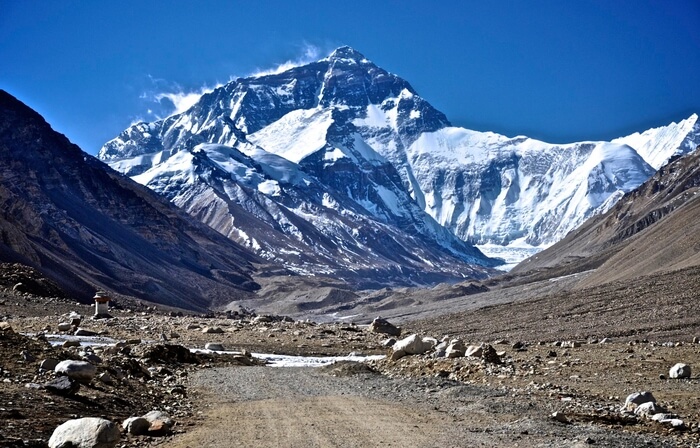
Mount Everest Base Camp in Tibet
Everest has two base camps, one in Nepal, on the southern side of the mountain, and the northern Base Camp in Tibet. While the base camp in Nepal requires a long, arduous trek of around 12-14 days, the Tibetan base camp can be accessed by vehicle direct to the camp and gives some of the most spectacular views of Everest’s mighty peak. Conversely, the base camp in Nepal does not have a view of the peak, obstructed by the mountain’s various ridges, and trekkers have to climb to places such as Kala Patthar to get a view of the summit of the mountain.
“Don’t tell the Nepal Tourism Board, but Tibet has easily the best views of the world’s most famous mountain. While two-week-long trekking routes on the Nepal side offer up only occasional fleeting glimpses of the peak, the view of Mt Everest’s unobstructed north face framed in the prayer flags of Rongphu monastery or from a tent at the Base Camp will stop you in your tracks. _____ by Lone Planet Guidebook.”
Table of Contents
Unique Tibetan Buddhism culture
Traveling to the base camp in the far west of the region, tourists pass through many areas and towns to get there on their tour and have the chance to explore and experience the unique Tibetan Buddhist culture of the region. While the Tibetan culture has been influenced greatly over the millennia by that of its closest neighbors, Nepal, China, and India, the predominant local culture has incorporated certain aspects of those influencing cultures to develop the distinct Tibetan culture of today.
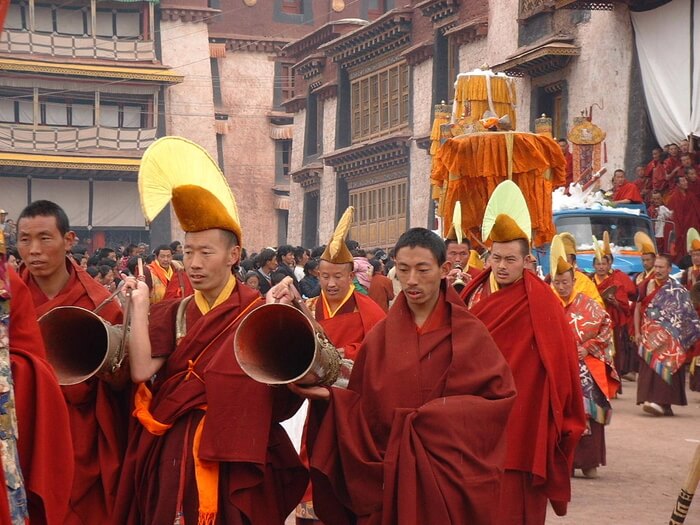
Buddhist Monks in Tibet
With a very few exceptions, almost all Tibetans are Buddhists and are devout in their beliefs. Buddhism has been a part of Tibetan culture for almost 2,000 years and was introduced to the region in the seventh century. Buddhism has exerted a very strong influence on the culture of the Tibetan people, and its art, literature, and music all have elements of the devout Buddhist beliefs of the region. Even Buddhism has adapted to become a very unique religion in Tibet. It has been heavily influenced by Bonism, the original religion of the ancient Tibetan people.
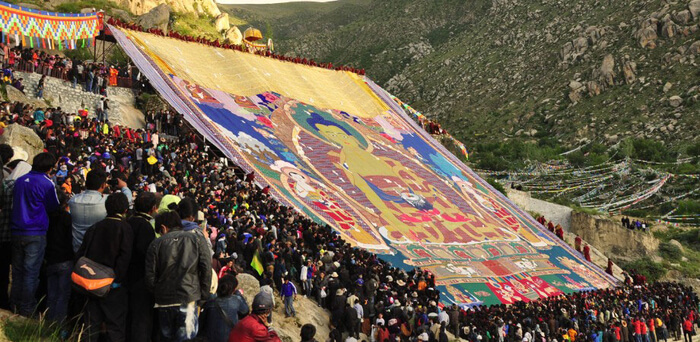
Giant thangka painting at the Shoton Festival in Drepung Monastery, Lhasa
Buddhism is so heavily intertwined with the local culture that they are completely inseparable, and it is impossible to know which is an original cultural tradition. Tibetans bring Buddhism into their everyday lives in all kinds of ways, from the daily rituals on waking in the morning, to the sowing of seeds for their pastoral lifestyles, and even the preparations for harvest. Even some of the foods that are popular in Tibet have religious undertones, such as the famed Tibetan Yogurt, which even has its own festival based on its consumption by Tibetan Buddhist monks on completion of their 100-day long semi-fasting period.
Wherever you travel in Tibet, you will experience the many different aspects of this unique Buddhist culture and will be able to learn more about the unique Tibetan people and their way of life. Unlike any other culture in the world, Tibetan Buddhist culture is still as strong as ever on the plateau, and even with the introduction of modern, western culture to the region, has prevailed over the invading westernization.
Stunning alpine lakes and unobstructed Himalayan views
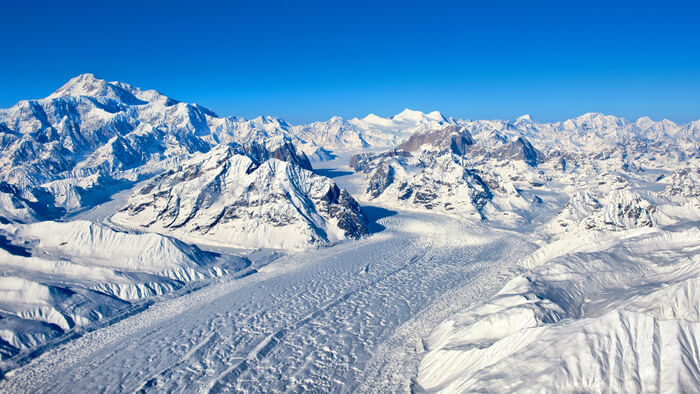
The Himalayas covered in Snow
Tibet is well known for its scenery and none more so that the amazing views of the Himalayas that one has from almost every part of the region. With many of the Himalayan mountains topping 7,000 and 8,000 meters, they are clearly visible from every part of the plateau you will travel through. It is this amazing view of the world’s highest mountain range that attracts many people to Tibet, and for good reason. As you travel across the region to the heady height of Mount Everest, you will pass along and even over some of the highest mountains on the planet, and through the world’s highest mountain passes.
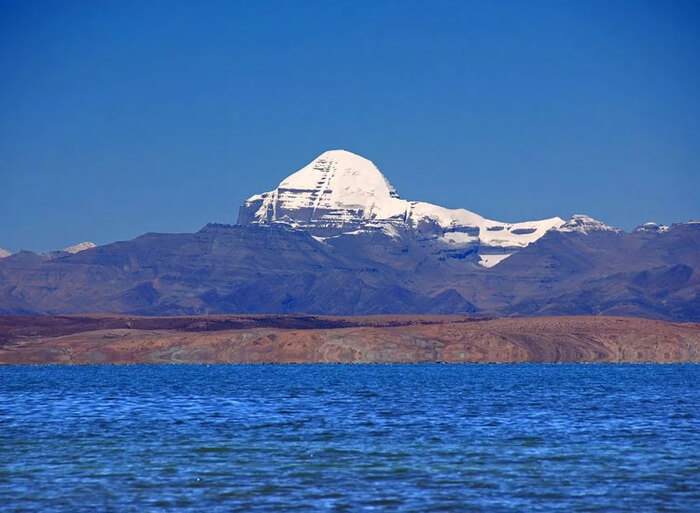
Lake Mansarovar in Ngari Prefecture, with Mount Kailash in the background
Tibet is one of the largest areas in China for lakes, and the inland lakes of Tibet are often the subject of holy reverence. The lakes in Tibet vary in types, with inflow and outflow lakes as well as both freshwater and saline lakes. Tibet is a region on a high plateau with even higher mountains, and many of the stunning lakes are fed by snowmelt from the surrounding mountains.
Of all the lakes in Tibet, there are three that stand out more than the others, and which are revered among Tibetan Buddhists as sacred lakes. Known as the Great Three Sacred lakes of Tibet, they are Lake Manasarovar, Lake Yamdrok, and Lake Namtso. These stunning lakes are set in beautiful surroundings with a backdrop of mountains and prairies that makes them even more spectacular.
Intriguing secular and religious life of Tibetans
While many Tibetans are devout Buddhists, very few are actually bound by religious rules other than their own beliefs. Buddhism is the main religion of the region and is followed devoutly by most Tibetans, while those most devout of Buddhists, the monks and lamas, and often enter the monastery at the insistence of their elders at a very young age.
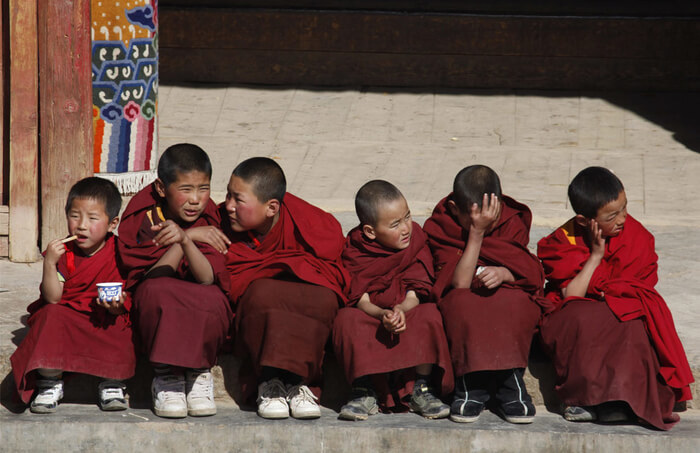
Teenage monks in Tibet
However, not all aspects of Tibetan life is about religion. While Tibetans believe that their gods will help them with a bountiful harvest if they pray for it, the actual planting of crops and harvesting process follows farming techniques that have been developed on the plateau over thousands of years, and have very little to do with religion. The same can be said of the nomadic herders that wander the plateau with their yak herds. The techniques used in rearing the yaks and making sure they are well fed and cared for derives more from the experiences of their ancestors than religious teachings. Many of the aspects of Tibetan life are based in ancient teachings on farming, herding, building, etc., and while the Tibetan people may pray for good fortune, it is their own hard work that pays off.

Tibetan nomads living the traditional way of life on the plains of the plateau
Always, the religious aspect of Tibetan life is never far away, as can be seen on many occasions. Festivals are held in conjunction with certain normal happenings that have a religious connotation, and which the Tibetans believe will help in their everyday lives. The religious life of the Tibetan people is a part of their everyday lives, and while there are differences between religious and secular aspects of life in the normal Tibetan family, both have been combined to form a unique lifestyle that can be found nowhere else in the world.
Recent Posts
The Ultimate Guide to Tibet Tours, Travel, and Trekking Adventures
How to Explore Tibetan Culture
Exploring Lhasa:The Heart of Tibet
All Categories
- About Tibet
- book a Tibet tour
- Buddhism Practice
- Budget Tour
- China-Tibet Train
- Customized Tibet tour
- Historical Sites
- Hot Springs in Tibet
- News
- Photography in Tibet
- Tibet attraction
- Tibet Group Visa
- Tibet Motorcycle Tour
- Tibet Small Group Tours
- Tibet Tours and Tibetan Tour Guide
- Tibet Train
- Tibet Travel FAQs
- Tibet Travel Information
- Tibet Travel News
- Tibet Travel Permit Update
- Tibet Travel Prices Rises
- Tibet Trek
- Tibet Trekking Tour
- Tibet weather and climate
- Tibet Wildlife animals
- Tibet Winter Tour
- Tibetan Buddhism
- Tibetan Cultural Features
- Tibetan Culture and Poeple
- Tibetan Festivals
- What to see in Tibet



